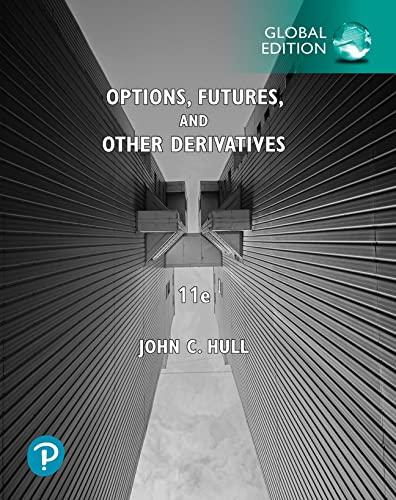Question
The Erley Equipment Company purchased a machine 5 years ago at a cost of $85,000. The machine had an expected life of 10 years at
- The Erley Equipment Company purchased a machine 5 years ago at a cost of $85,000. The machine had an expected life of 10 years at the time of purchase, and it is being depreciated by the straight-line method by $8,500 per year. If the machine is not replaced, it can be sold for $15,000 at the end of its useful life. A new machine can be purchased for $170,000, including installation costs. During its 5- year life, it will reduce cash operating expenses by $40,000 per year. Sales are not expected to change. At the end of its useful life, the machine is estimated to be worthless. MACRS depreciation will be used, and the machine will be depreciated over its 3-year class life rather than its 5-year economic life; so the applicable depreciation rates are 33%, 45%, 15%, and 7%. The old machine can be sold today for $55,000. The firms tax rate is 40%. The appropriate WACC is 9%.
a. If the new machine is purchased, what is the amount of the initial cash flow at Year 0?
b. What are the incremental cash flows that will occur at the end of Years 1 through 5?
c. What is the NPV of this project? Should Erley replace the old machine? Explain.
- Kristin is evaluating a capital budgeting project that should last for 4 years. The project requires $800,000 of equipment. She is unsure what depreciation method to use in her analysis, straight-line or the 3-year MACRS accelerated method. Under straight-line depreciation, the cost of the equipment would be depreciated evenly over its 4-year life (ignore the half-year convention for the straight-line method). The applicable MACRS depreciation rates are 33%, 45%, 15%, and 7% as discussed in Appendix 12A. The companys WACC is 8%, and its tax rate is 35%.
a. What would the depreciation expense be each year under each method?
b. Which depreciation method would produce the higher NPV, and how much higher would it be?
- Huang Industries is considering a proposed project whose estimated NPV is $12 million. This estimate assumes that economic conditions will be average. However, the CFO realizes that conditions could be better or worse, so she performed a scenario analysis and obtained these results:
Economic Scenario Probability of Outcome NPV
Recession 0.05 ($70 million)
Below average 0.20 (25 million)
Average 0.50 12 million
Above average 0.20 20 million
Boom 0.05 30 million
Calculate the projects expected NPV, standard deviation, and coefficient of variation.
- You must evaluate a proposal to buy a new milling machine. The base price is $135,000, and shipping and installation costs would add another $8,000. The machine falls into the MACRS 3-year class, and it would be sold after 3 years for $94,500. The applicable depreciation rates are 33%, 45%, 15%, and 7% as discussed in Appendix 12A. The machine would require a $5,000 increase in net operating working capital (increased inventory less increased accounts payable). There would be no effect on revenues, but pretax labor costs would decline by $52,000 per year. The marginal tax rate is 35%, and the WACC is 8%. Also, the firm spent $4,500 last year investigating the feasibility of using the machine.
a. How should the $4,500 spent last year be handled?
b. What is the initial investment outlay for the machine for capital budgeting purposes,
that is, what is the Year 0 project cash flow?
c. What are the projects annual cash flows during Years 1, 2, and 3?
d. Should the machine be purchased? Explain your answer.
- Mississippi River Shipyards is considering the replacement of an 8-year-old riveting machine with a new one that will increase earnings before depreciation from $24,000 to $46,000 per year. The new machine will cost $80,000, and it will have an estimated life of 8 years and no salvage value. The new machine will be depreciated over its 5-year MACRS recovery period; so the applicable depreciation rates are 20%, 32%, 19%, 12%, 11%, and 6%. The applicable corporate tax rate is 40%, and the firms WACC is 10%. The old machine has been fully depreciated and has no salvage value. Should the old riveting machine be replaced by the new one? Explain your answer.
- The Butler-Perkins Company (BPC) must decide between two mutually exclusive projects. Each costs $6,750 and has an expected life of 3 years. Annual project cash flows begin 1 year after the initial investment and are subject to the following probability distributions:
Project A Project B
Probability Cash Flows Probability Cash Flows
0.2 $6,000 0.2 $ 0
0.6 6,750 0.6 6,750
0.2 7,500 0.2 18,000
BPC has decided to evaluate the riskier project at 12% and the less-risky project at 10%.
a. What is each projects expected annual cash flow? Project Bs standard deviation (B) is
$5,798, and its coefficient of variation (CVB) is 0 76. What are the values of A and CVA?
b. Based on the risk-adjusted NPVs, which project should BPC choose?
c. If you knew that Project Bs cash flows were negatively correlated with the firms other
cash flows whereas Project As flows were positively correlated, how might this affect
the decision? If Project Bs cash flows were negatively correlated with gross domestic
product (GDP), while As flows were positively correlated, would that influence your
risk assessment?
Step by Step Solution
There are 3 Steps involved in it
Step: 1

Get Instant Access to Expert-Tailored Solutions
See step-by-step solutions with expert insights and AI powered tools for academic success
Step: 2

Step: 3

Ace Your Homework with AI
Get the answers you need in no time with our AI-driven, step-by-step assistance
Get Started


